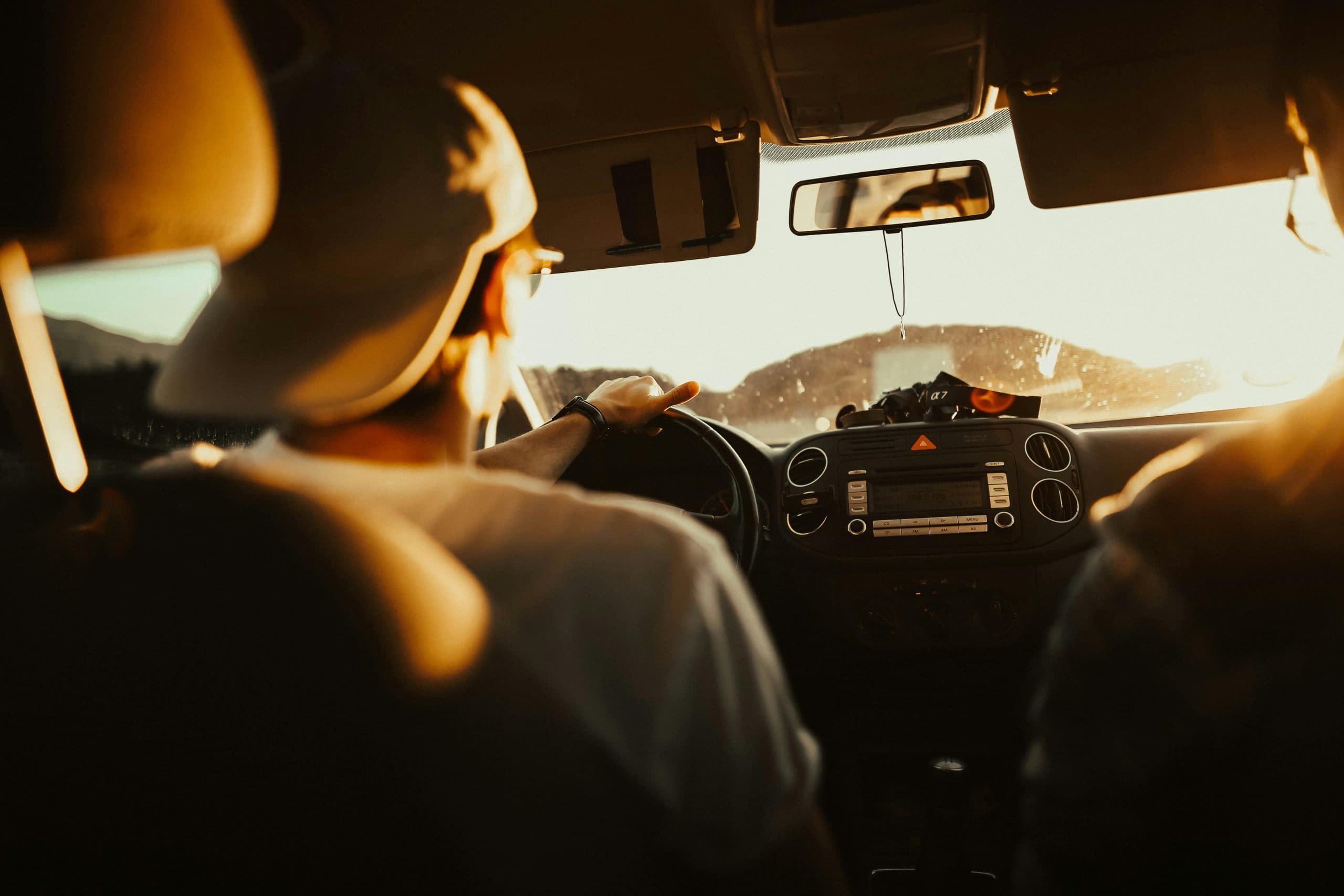Planning a big road trip adventure? Before you hit the open road, it’s crucial to make sure your vehicle is just as ready for the journey as you are. When driving on a long trip, you should take certain steps to ensure safety, comfort, and peace of mind. This ultimate guide will walk you through a car checklist before a road trip, along with tips on what to pack and how to plan, so you can focus on fun and not on car troubles.
Whether you’re gearing up for a cross-country adventure or a weekend getaway, use this guide as your go-to road trip preparation resource. We’ll cover how to prepare your car for a road trip (mechanically), what to bring on a long car ride, and advice for the journey itself (like the best time to leave for a 12-hour drive and staying alert on the road). Let’s dive in!
Pre-Trip Car Maintenance Checklist
The first step in road trip preparation is making sure your vehicle is in top shape. A visit to your mechanic for a quick inspection or service can save you from breakdowns later. If you prefer DIY, here’s a checklist for your car before a road trip (you can even find a car service checklist printable online to help keep track):
- Change Oil and Filters: Verify when your last oil change was. If you’re due soon (or will be during the trip), change the oil before you go. Don’t forget the oil filter. Fresh oil ensures your engine runs smoothly over long distances. Also consider replacing the air filter if it’s dirty, so your engine breathes easy.
- Check Fluid Levels: This includes engine coolant (antifreeze), brake fluid, power steering fluid, transmission fluid (if applicable), and windshield washer fluid. Top off any that are low. Coolant is especially important for long drives to prevent overheating. Also, make sure your windshield washer fluid is full – you might hit a lot of bugs or dirt on the highway and will need a clear view.
- Tires Inspection: Examine your tires for proper tire pressure and sufficient tread depth. Properly inflated tires improve fuel efficiency and handling. Use a pressure gauge to check all tires (including the spare tire). Your driver’s door jamb or manual will list the correct PSI. Also check tire tread – worn tires are unsafe, especially if you encounter rain (bald tires can cause hydroplaning). If the tread is low or you notice any damage (cracks, bulges), consider replacing the tires before the trip. Don’t forget: bring a functional spare tire. Make sure the spare is inflated and that you have a tire iron and jack in the car.
- Brakes: When driving on a long trip you should be confident in your braking system. If you’ve noticed any squeaking, squealing, or reduced braking performance, get your brakes checked. It may involve replacing brake pads, and checking brake rotors and fluid. Good brakes are essential for mountain roads or sudden stops on the highway.
- Battery: A weak car battery can leave you stranded. Check that your battery terminals are clean (no corrosion) and that the battery is securely mounted. If your battery is more than 3-4 years old, consider having it tested at an auto parts store – they often do this for free. Replace it if there’s any doubt about its reliability (better safe than sorry). Cold or hot weather during a trip can stress a battery further.
- Lights and Electrical: Test all your lights – headlights (both low and high beam), turn signals, brake lights, tail lights, and emergency flashers. It’s easy not to notice a burnt-out bulb until you need it. Also, ensure internal cabin lights work (handy for searching maps or items in the dark). If you’re towing anything, test the trailer lights too. Electrical wise, if any dashboard warning lights are on (like check engine), get them diagnosed before traveling. Many auto shops or parts stores can scan your car’s computer.
- Wiper Blades: If your wipers streak or squeak, replace them. Good windshield wipers are a must for any rain or even insect splatters. Carrying a spare set isn’t a bad idea either, especially for a very long trip or if you’ll pass through different climates.
- Alignment and Suspension: If your car pulls to one side or the steering wheel vibrates at highway speed, you might need an alignment or to balance your tires. Long drives are much easier when the car is driving straight and smooth. Also check that your suspension (shocks/struts) are in good shape – if the car bounces a lot after a bump, it might be time to replace them.
- Belts and Hoses: Pop the hood and visually inspect the engine belts (like the serpentine belt) for cracks or fraying. Check coolant hoses for any leaks, bulges, or cracks. A broken belt or burst hose can quickly ruin a road trip by causing a breakdown. If they’re old or damaged, replace them ahead of time.
- Air Conditioning: Especially important for summer trips – test your AC to ensure it’s blowing cold. If it’s weak, you might need a refrigerant top-up or service. Similarly, check the heater if you’ll drive through cold areas or at night. Comfort matters when you’re in the car for hours.
- Emergency Braking System: If your car has ABS (Anti-lock Braking System) or other driving aids, ensure they’re functioning (no warning lights on the dash).
- Spare Key: It’s a pro-tip to have a spare car key and keep it in a safe place (not in the trunk!). For example, one driver keeps a spare key in their wallet or hidden in a magnetic box under the car. This can be a lifesaver if you accidentally lock your keys inside the car during a pit stop.
Consider having a trusted mechanic do a quick pre-trip inspection. Tell them you’re about to take a long road trip and they’ll know what to double-check. Many will inspect things like wheel bearings, CV joints, and other components that you might not easily check yourself. A little time in the garage now can prevent hours stuck on the roadside later. According to experts, it’s wise to go through such a checklist to get your car road-trip-ready (fluids, battery, tires, lights, etc.).
What to Bring on a Long Car Trip (Packing Essentials)
Aside from prepping the car mechanically, you should also pack smart. Here’s what to bring on a car trip to be prepared for common situations and to stay comfortable:
Documents and Important Items
- Driver’s License, Registration, and Insurance: Seems obvious, but double-check you have your license and that it’s not expired. Keep your vehicle registration and proof of insurance in the glove box. If travelling internationally (e.g., driving into Canada or Mexico), ensure you have necessary documents like passports or international driving permits.
- Car Manual: That booklet in your glove compartment can be a lifesaver if an unfamiliar warning light comes on or if you need to find the tire pressure specs, etc. Keep it handy.
- Roadside Assistance Info: If you have AAA or another roadside assistance membership, carry the card or have the number in your phone. If not, consider signing up before the trip. Also, have your auto insurance’s roadside number if they offer one.
- Spare Car Key: (Reiterating from above) keep a spare key in your wallet or with a travel companion. This can save your bacon if you misplace your primary key.
Emergency and Repair Kit
- First Aid Kit: Pack a basic first aid kit with bandages, antiseptic wipes, pain relievers, any personal medications, etc. Long drives can sometimes lead to minor incidents (like cuts or headaches), and it’s best to be prepared.
- Flashlight (and Extra Batteries): If you have car trouble at night, a flashlight is essential. A headlamp (hands-free) can be very handy too. Make sure batteries are fresh, or bring a rechargeable one.
- Jumper Cables or Jump Starter: Batteries can die unexpectedly (leaving interior light on, for example). A set of jumper cables allows you to get a boost from a friendly driver. Even better, a portable lithium-ion jump starter can jump your car without a second vehicle – and they often have USB ports to charge devices as a bonus.
- Basic Tools: Carry a small toolkit: screwdrivers, pliers, adjustable wrench, duct tape, and maybe a multi-tool or pocket knife. You’d be surprised how often a loose clamp or minor issue can be fixed with a simple tool on the road. Also include a tire pressure gauge and a can of tire sealant (like Fix-a-Flat) for small punctures (this can get you to a service station in a pinch, but remember it’s a temporary fix).
- Spare Tire and Jack: We mentioned it already, but to stress: ensure your spare tire is in good condition and you have the jack and lug wrench. Practice once at home if you’ve never changed a tire, so you’re not learning for the first time on the side of the highway.
- Reflective Triangle or Flares: These help alert other drivers if you’re pulled over for a breakdown, especially at night. Place them a good distance behind your car to give oncoming traffic warning.
- Fire Extinguisher: A small automotive fire extinguisher can be a literal lifesaver. In the rare event of a car fire (for example, an engine electrical fire or a small fuel fire), you want to have this within reach. Make sure it’s rated for Class B and C fires (flammable liquids and electrical).
- Work Gloves and Rags: If you need to do any tinkering under the hood, gloves will keep your hands clean and safe. Rags or paper towels are great for checking oil or wiping spills. Also consider a poncho or rain jacket easily accessible in case you have to fix a tire in the rain.
Comfort and Convenience
- GPS or Maps: These days, most rely on smartphones for navigation. Make sure your navigation app (Google Maps, Waze, etc.) is up to date. But what if you lose signal? It’s wise to have offline maps downloaded or carry a paper map/road atlas as backup, especially if you’ll be in areas with spotty reception. Part of good road trip preparation is knowing your route options.
- Phone Charger and Mount: A car phone charger (USB adapter or built-in) is essential for keeping devices powered. A dashboard or vent-mounted phone holder will keep your phone visible for navigation without taking your eyes too far off the road. Don’t forget charging cables for all devices (bring an extra, they do break or get lost).
- Music and Entertainment: Long hours on the road are better with good tunes or podcasts. Create playlists in advance or download your favorite podcasts/audiobooks. Since streaming might cut out in remote areas, have content stored on your device. Consider an auxiliary cable or ensure your Bluetooth is working to connect your phone to the car audio. For old-school cars, there are cassette adapters or small FM transmitters. Road trip trivia games or conversation starter questions can also be fun with passengers.
- Snacks and Water: Pack a cooler or bag with plenty of water and your favorite snacks. Staying hydrated is important to keep alert. Snacks like nuts, fruits, granola bars, or sandwiches can save you from getting “hangry” if the next restaurant is miles away. Plus, it can save time and money versus constant convenience store stops.
- Trash Bag: A small garbage bag or even plastic grocery bags tucked in the car will help keep the interior tidy. It’s easier to enjoy the ride when you’re not swamped in wrappers and empty bottles. You can dispose of the trash at gas stops.
- Comfort Items: Think about anything that makes you more comfortable on a long ride. This could be a neck pillow, a small blanket (passengers might nap, and also handy if it gets chilly at night), sunglasses (a must for driver and riders during a sunny drive), and maybe a hat or sunscreen if you’ll be driving with sun pouring in. If you’re traveling with kids, don’t forget their comfort items and some activities to keep them occupied (tablets, coloring books, etc.).
- 100 Things to Keep in Your Car? While you don’t literally need 100 things, some extensive road trippers have very thorough kits. The idea is to be prepared for many scenarios – from boredom to emergencies. The items above cover most bases, but additional things could include: a small shovel (if driving in snow or off-road), a towel (impromptu picnic or if someone gets wet), toilet paper or tissues (you never know), and maybe camping gear if you plan to sleep roadside.
COVID/Cleanliness Items (if applicable):
- It’s not a bad idea to have some hand sanitizer, disinfectant wipes, and a few masks available. Roadside bathrooms and gas pumps can be germy; staying clean will keep everyone healthier on the trip.
By packing these essentials, you’ll be ready for long road trip situations from the mundane to the unexpected. It’s all about balancing having what you need without overpacking too much. Customize your kit based on where you’re going (e.g., bug spray for camping, bear spray if in wilderness, etc.) and who’s with you (extra diapers for a baby, or motion sickness pills for anyone prone to carsickness).
Planning and Driving Tips for Long Trips
Now that your car is prepped and packed, let’s talk about the journey itself. How to prepare for a road trip includes planning your itinerary and practicing safe driving habits. Here are some key tips:
- Plan Your Route (but Allow Flexibility): It’s wise to map out your general route and key stops (for fuel, food, overnight stays, and attractions). If it’s a 12+ hour drive, figure out where roughly midway you might want to stop or even spend the night. However, also allow spontaneity – some of the best road trip memories come from unplanned stops at interesting roadside attractions or scenic overlooks. Use tools like Google Maps to estimate drive times, but remember to build in breaks. A rule of thumb: for every 4 hours of driving, plan at least a 15-minute break.
- Best Time to Leave for a Long Drive: A common question is when’s the best time to embark on a 12-hour drive (or similarly long journey). The answer can vary depending on personal preference and situation. Leaving early in the morning (e.g., 5 AM) can be great because you beat city traffic and you’ll do a good chunk of driving in daylight when you’re most alert. Plus, you might catch a beautiful sunrise on the road. Some people prefer to drive through the night to avoid traffic – this can work if you’re a night owl and used to it, but be cautious: driving overnight can be risky due to fatigue. If you do this, get a nap in beforehand and have a co-driver who stays awake to talk and keep you alert. Generally, avoid starting a long drive after a full day of work when you’re already tired. The best time to leave for a 12-hour drive might actually be around 4-5 AM; you’re (hopefully) well-rested, and you can arrive by evening.
- When driving on a long trip you should… remember these golden rules: stay alert, take breaks, and switch drivers if possible. Drowsy driving is as dangerous as drunk driving. If you start feeling the heavy eyelids or zoning out, it’s time to pull over for a break – grab a coffee, do some jumping jacks, or even take a 20-minute power nap in a safe location. If you have another qualified driver in the car, use them! Even a couple of hours of rest as a passenger can help.
- Use Cruise Control (Wisely): On long highway stretches, cruise control can help maintain a constant speed and perhaps improve fuel economy. It also gives your right foot a bit of a break. However, don’t use it in heavy traffic, in wet/icy conditions, or on very hilly or curvy roads. Always keep your attention on the road – cruise control is not autopilot.
- Fuel Stops and Fuel Economy: Don’t run the tank too low, especially in unfamiliar territory where gas stations might be far apart. As a rule, consider refueling when you hit a quarter tank remaining. That way you have a buffer in case the next station is closed or farther than expected. It’s also good for your fuel pump to not run on fumes. Long trips are a good opportunity to calculate your fuel economy – track miles and gallons; if you notice a big drop in MPG, it could signal a tire pressure issue or other problem.
- Weather and Traffic Checks: Before and during your drive, keep an eye on weather forecasts. If there’s a snowstorm, heavy rain, or high winds expected on your route, you might adjust timing or path. Apps like Waze can help monitor traffic jams or accidents ahead. Having a general awareness helps you avoid unpleasant surprises.
- Stay Comfortable and Healthy: Adjust your seat and posture to avoid back pain. Use lumbar support if needed (even a rolled-up towel can work). Keep the cabin at a comfortable temperature – too warm and you’ll get sleepy, too cold and it’s distracting. Stay hydrated with water (but not so much that you need a bathroom every 30 minutes). Light snacks over heavy meals can prevent the post-meal drowsiness. Also, never underestimate the value of fresh air – crack the window occasionally or at stops, stretch your legs, do a quick walk or some stretches. It’s refreshing and helps circulation.
- Long Road Trip Advice for Kids/Pets: If you travel with children, plan for extra stops to let them burn off energy. Bring toys, books, or a tablet loaded with movies. Car games like “I spy” or the license plate game can be fun. For pets, bring their water bowl, some comfort toys, and plan pet-friendly stops (many rest areas have dog-walk areas). Never leave pets or kids in a parked car in warm weather even for a short time – the car can heat up dangerously fast.
- Navigation Helpers: Aside from GPS, sometimes a passenger can act as a navigator, which is great. If you’re solo, voice directions are your friend. Some drivers like to have a list of major road changes on a sticky note (e.g., “I-90 to I-80 at X city”) just to anticipate key interchanges without needing to look at a screen.
- Expect the Unexpected: Despite all preparation, things can happen – a flat tire, a road closure, etc. Keep your cool and have a mindset that it’s part of the adventure. If you do have a car issue, try to get to a safe location before addressing it. For example, if a tire seems low, pull off at the next exit rather than on a narrow shoulder, if possible. Use your hazard lights if you’re moving significantly under speed or stopped due to an emergency. And remember, stuff can be replaced – people can’t. So prioritize safety over belongings or schedules.
Final Checks Before You Depart
On the morning of your trip (or the night before), run through a quick road trip checklist:
- Pack the Car Smartly: Place heavier items low and toward the center of the car (for better balance). Items you’ll need access to (snacks, chargers, a jacket) keep within reach. Secure any loose items – you don’t want things flying if you brake hard. If you have a lot of cargo, ensure it doesn’t block your rear view. Consider using a roof cargo box if space is tight, but be mindful of the added height for parking garages or low clearances.
- Quick Once-Over of the Car: Do a walk-around: Are tires looking good? All lights working? Mirrors positioned correctly? Plates clearly visible? Also, adjust your seat, steering, and mirrors for your ideal driving position before you go.
- Gas Up: Fill the tank so you start with maximum range. Check that you have your payment cards or cash for tolls (some regions it’s handy to have coins or small bills).
- Set GPS and Music Before Driving: Input your destination (or at least the first stop) into your navigation app while parked. Get your playlist or radio tuned so you’re not fiddling with your phone on the road. If traveling at odd hours, maybe pre-brew some coffee or have caffeinated drinks ready.
- Tell Someone Your Plan: It’s wise to let a friend or family member know your route and ETA when driving very long distances. Just a quick text like “leaving at 6am, taking I- XYZ, expect to arrive by 6pm” gives a point of reference. Check-in updates during stops can also let them know you’re safe. It’s an extra layer of safety.
By following this ultimate checklist on how to prepare your car for a long road trip, you’re setting yourself up for a successful journey. You’ve handled the car service prep, packed the things to bring on a long road trip, and armed yourself with safe driving strategies. Now all that’s left is to hit the road and enjoy the adventure!
Remember, a well-prepared car means 100% peace of mind on the highway. So take that time to prep – then go create amazing road trip memories. Safe travels and happy road-tripping!









Leave a Reply